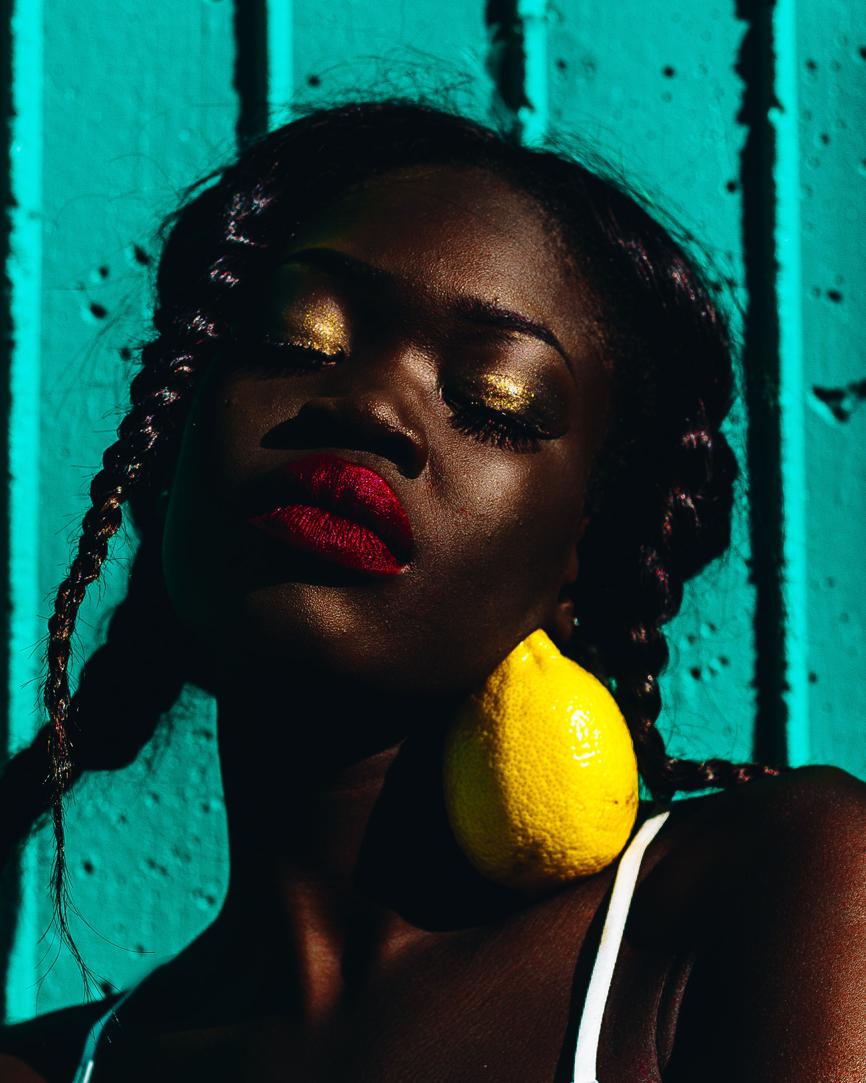In the current digital age, social media has a significant impact on almost every aspect of our lives, including fashion. With children being active users of social media platforms, there is a growing concern about how these platforms influence their clothing choices. The fashion industry is continuously evolving, and with the advent of social media, children have access to a vast variety of clothing options.
Therefore, it is essential to understand the impact of social media on children’s fashion preferences. This blog explores the influence of social media on children’s fashion and how it can impact their self-image and personal style choices.
Let’s dive in to understand how social media affects children’s fashion.
Social Media Platforms as a Fashion Influencer for Children
Children today are growing up in a world where technology and social media are pervasive aspects of their daily lives. For better or for worse, social media platforms have a significant impact on the fashion choices of children and teenagers. Instagram, Facebook, and TikTok, among others, have become important sources of fashion inspiration and trendsetting.
Children are constantly exposed to the latest clothing styles, shoes, and accessories, often posted by their favorite influencers or celebrities. Social media platforms have made it easy for them to follow fashion trends and emulate the style choices of their peers.
As a result, social media has become a powerful influencer of children’s fashion, shaping what is considered “cool” or “in” among the younger generation.

The rise of Instagram fashion influencers for children
One of the key players in the social media fashion game is Instagram, which has become a go-to platform for many children looking for inspiration and guidance on what to wear. A new breed of fashion influencers has emerged on the platform, dedicated solely to children’s fashion. These influencers often have tens or even hundreds of thousands of followers, and they are highly influential in shaping the choices made by their young audience.
Some of these influencers focus on sustainable fashion, while others showcase high-end designer brands. Regardless of their specific focus, they all have the power to impact children’s fashion choices and shape the trends that dominate playgrounds and schoolyards across the country.
Of course, this influence is not always positive. Some critics argue that social media puts too much pressure on children to conform to certain fashion standards, leading to feelings of inadequacy and low self-esteem.
But regardless of these concerns, there is no denying that social media has fundamentally changed the way we think about fashion and how it impacts the lives of children.
The impact of YouTube and TikTok on children’s fashion trends
The rise of social media influencers is not limited to Instagram. Other platforms like YouTube and TikTok have also played a significant role in shaping children’s fashion trends.
Many young people turn to these platforms for fashion inspiration and tutorials on how to create a certain look.
The sheer amount of content available on these platforms means that children are exposed to a wide variety of styles, trends, and fashion advice. This can be both positive and negative.
On the one hand, it allows young people to explore their creativity and express their individuality through fashion. On the other hand, it can lead to a culture of consumerism, where children feel pressure to constantly keep up with the latest trends and buy new clothes.
Overall, the impact of social media on children’s fashion is complex and multifaceted.
As parents and caregivers, it is important to be aware of the influence that social media can have on our children’s fashion choices and to help them navigate this world in a healthy and positive way.
How fashion brands use social media to target children as consumers
In addition to the influence of social media influencers, fashion brands themselves have also recognized the importance of using social media to target children as consumers.
Platforms like Instagram, TikTok, and YouTube are filled with sponsored posts and collaborations between fashion brands and popular influencers.
These collaborations, which often involve free products or payments for promotion, can create a sense of exclusivity and desirability around certain brands and products.
Fashion brands also use social media to create hype around new releases and to offer special discounts and promotions to their followers.
As children become more active on social media, they become increasingly susceptible to these targeted marketing strategies.
Therefore, it is important for parents and caregivers to monitor their children’s social media use and to help them develop healthy habits around consumption and spending.
The role of parents in monitoring their children’s social media usage for fashion inspiration
With social media playing such a significant role in shaping children’s fashion choices, parents and caregivers have an important role to play in monitoring their children’s social media usage.
While social media can be an excellent source of fashion inspiration, it can also lead to feelings of inadequacy and low self-esteem if children compare themselves to the carefully curated images they see.
Parents can help by emphasizing that social media posts are not always an accurate reflection of reality and encouraging their children to develop a positive relationship with their own unique sense of style.
Additionally, parents can set boundaries around social media usage and talk to their children about the types of messages and images they are exposed to online.
With the right guidance and support, children can learn to navigate social media in a way that promotes positive self-image and healthy consumption habits.
The Positive and Negative Impact of Social Media on Children’s Fashion
Social media has undoubtedly revolutionized the way children access, consume and create fashion content. On the one hand, social media provides a platform for children to express their creativity and individuality, as well as a source of inspiration for their fashion choices. On the other hand, the constant barrage of carefully curated images can have a negative impact on children’s perception of themselves and their body image.
It is crucial for parents to balance the positive and negative aspects of social media by helping their children develop a healthy relationship with fashion and encouraging them to focus on self-expression rather than achieving unrealistic beauty standards.

The positive impact of social media on children’s fashion selfexpression
Social media platforms such as Instagram and TikTok have become powerful tools for children to showcase their unique sense of style and creativity. By sharing photos and videos of their outfits and accessories, children can express themselves and their personalities in a way that was not possible before.
This has led to the rise of niche trends and styles that are not commonly seen in mainstream fashion, creating a more diverse and inclusive fashion landscape for children to explore.
The negative impact of social media on children’s body image
Despite the benefits of social media for children’s fashion self-expression, the constant exposure to edited and filtered images of “perfect” bodies can have a detrimental effect on children’s body image and self-esteem. Studies have shown that social media use is associated with increased body dissatisfaction and the development of unhealthy eating habits in children.How to promote healthy social media use for children’s fashion
To ensure that your child has a positive experience with social media and fashion, it is essential to promote healthy habits and values. This includes encouraging your child to focus on self-expression rather than achieving unrealistic beauty standards, promoting body positivity and self-love, and monitoring their social media use to ensure that they are not exposed to harmful content.By doing this, parents can help their children navigate the complex world of social media and develop a healthy relationship with fashion.
The negative impact of obsessing over social media fashion trends for children
In addition to the negative impact of social media on body image, the obsession with staying on-trend and keeping up with the latest fashion can also have negative consequences for children. In some cases, children may feel pressure to conform to these trends, leading to feelings of inadequacy or rejection if they are unable to keep up.
Additionally, the constant push for new and trendy styles can lead to overconsumption and contribute to a culture of fast fashion, which has devastating environmental impacts. It’s important to teach children that true fashion is not about keeping up with the latest trend but about self-expression and being comfortable in one’s own skin.
The role of cyberbullying in children’s fashion choices
Cyberbullying is a major issue that is prevalent on social media platforms, and unfortunately, it can also have an impact on children’s fashion choices. Children may be subjected to online harassment and ridicule if they are not wearing the “right” clothes or if they are not conforming to popular fashion trends. This kind of negativity can lead to a lack of self-confidence and even depression in some children.
As parents and caregivers, it’s important to monitor children’s social media use and intervene if necessary. Encouraging children to be true to themselves and their own unique fashion sense can also help to mitigate the effects of cyberbullying and boost their self-esteem.
The need for balanced social media usage and critical thinking when it comes to fashion inspiration
Social media can be a great source of inspiration when it comes to children’s fashion, but it’s important to approach it with a critical eye and encourage balanced usage. Many social media influencers, particularly in the fashion space, promote a certain aesthetic and may make products or clothing seem essential for a “perfect” wardrobe.
However, it’s important to remember that social media often paints a curated and unrealistic view of reality. Encouraging children to think critically about the media they consume and to focus on self-expression rather than trend-following can help promote a healthier relationship with fashion and social media.
Children’s Fashion Brands and Social Media
Children’s fashion brands have also heavily embraced social media as a marketing tool. Through platforms like Instagram and TikTok, brands can showcase their products and create partnerships with popular influencers and bloggers.
While this can be beneficial for brand exposure and sales, it can also perpetuate unrealistic beauty standards and lead children and parents to feel pressure to constantly purchase new items to keep up with the latest trends.
Parents should have conversations with their children about the importance of mindful consumption and the dangers of falling into the trap of constantly needing to buy the latest fashion items. Encouraging children to embrace their own unique style and expressing themselves through clothing can help foster a healthier and more sustainable relationship with fashion and social media.

The rise of online children’s fashion brands through social media marketing
Social media has played a significant role in the rise of online children’s fashion brands. With the ability to reach a global audience through platforms like Instagram, many small businesses have been able to establish themselves and gain a following. Social media also allows these brands to connect directly with their audience, receiving feedback and building relationships with customers.
However, this also means that there is a higher competition for attention, which can lead to a focus on quantity over quality in the content produced. It is important for parents to discern between what is a genuine brand and what is simply trendy marketing.
Using social media to promote ethical and sustainable fashion choices for children
As consumers become more aware of the impact of fast fashion on the environment and society, there has been a growing demand for ethical and sustainable fashion choices for children. Social media has become a powerful tool for promoting these values and connecting parents with like-minded brands.
Online children’s fashion brands can use their social media platforms to showcase their commitment to sustainability and ethical practices, as well as provide educational resources for parents on how to make conscious choices for their children’s clothing. By using social media as a platform to spread awareness and promote ethical fashion choices, we can create a more sustainable and responsible future for the fashion industry.
The role of social media in creating diverse and inclusive fashion options for children
Social media has played a crucial role in promoting diversity and inclusivity in the fashion industry for all ages, including children. With the rise of social media influencers who represent diverse backgrounds, interests, and body types, children are exposed to a wider range of fashion options that cater to their unique needs and preferences.
Brands that prioritize inclusivity can use social media to showcase their diverse product range and models of all races, ethnicities, and abilities.
In doing so, they create a welcoming and accepting environment for parents who want to see their children represented in the media.
Social media has the power to influence the way children perceive themselves and their peer groups, and by promoting diversity and inclusivity in fashion, we can create a more positive and accepting society for future generations.
The future of children’s fashion retail through social media platforms
The future of children’s fashion retail will be heavily influenced by social media platforms. Brands that are able to effectively leverage social media to engage their audience and promote their products in a visually appealing way will be at a significant advantage.
Children’s fashion brands now have the ability to showcase their collections to a vast audience through social media platforms such as Instagram, Facebook, and YouTube.
By partnering with social media influencers, brands can reach a large and engaged audience, increasing the visibility of their products and driving sales.
Social media also offers a unique opportunity for children’s fashion retailers to interact with their customers and build a community around their brand.
By responding to customer feedback and sharing user-generated content, brands can foster a sense of loyalty among their audience, leading to repeat business and increased brand awareness.
In conclusion, social media has revolutionized the way that children’s fashion is marketed and sold.
By prioritizing inclusivity and diversity and leveraging the power of social media, brands can create a positive and accepting environment for children, while driving sales and building a loyal and engaged community around their brand.
Parental Responsibilities in Children’s Social Media and Fashion Choices
Parents play a critical role in guiding their children’s social media and fashion choices. With the increasing influence of social media on children’s fashion, parents need to be aware of the impact it can have on their child’s self-esteem and body image.
Parents should monitor their child’s social media use and set guidelines for the types of content they consume and engage with. It’s also important for parents to teach their child about the importance of diversity and inclusivity in fashion. By encouraging their child to embrace their unique style and appreciate the diversity of others, parents can help their child develop a positive self-image and respect for others.
Ultimately, parents must strike a balance between allowing their child to express themselves through fashion while also ensuring that it aligns with their family values and beliefs.

The importance of teaching children healthy social media and fashion habits
Teaching children healthy social media and fashion habits is crucial in helping them navigate the ever-evolving digital landscape. Parents should educate their child about the potential dangers of social media, such as cyberbullying and online predators. They should also encourage their child to develop a healthy relationship with social media by teaching them to use it in moderation and to take breaks when necessary.
When it comes to fashion, parents should teach their child about the importance of sustainability and responsible consumption. They should encourage their child to buy quality clothing that will last longer and to avoid fast fashion trends that contribute to environmental and social issues.
By instilling healthy habits at a young age, parents can help their child develop a positive relationship with social media and fashion that will benefit them in the long run.
The impact of parental role models on children’s fashion choices
Parents play a crucial role in shaping their child’s fashion choices, whether they are aware of it or not. Children often look to their parents as role models for fashion and style, which means the choices parents make can have a significant impact on their child’s preferences.
Parents who consistently prioritize comfort and practicality over trends and fads may influence their child to do the same. Likewise, parents who show a commitment to sustainable and ethical fashion practices may motivate their child to do so as well.
It’s important for parents to be mindful of the example they are setting and to have open conversations with their child about why certain fashion choices are important.
By doing so, parents can foster a positive and conscious attitude towards fashion in their child.
Balancing children’s desire for selfexpression through fashion with parental guidance and boundaries
Children have a natural inclination towards self-expression, and fashion is one of the mediums they use to show their individuality. However, parents must strike a balance between allowing their child the freedom to express themselves while providing guidance and boundaries for appropriate fashion choices.
Parents can encourage self-expression by allowing their child to choose their clothes, experimenting with different styles and accessories, and expressing themselves through their outfits.
However, parents must also set boundaries by establishing dress codes or avoiding clothing items that may be inappropriate or offensive.
Parents must also be aware of the impact of social media on their child’s fashion choices.
Many social media platforms promote unrealistic beauty standards and may pressure children to conform to certain fashion trends. Parents must guide their child to make conscious and authentic fashion choices that reflect their personal values and beliefs.
By balancing self-expression with parental guidance, children can develop a healthy and confident relationship with fashion.
The future of social media regulation for children’s fashion influencers and online fashion retailers
In recent years, the rise of social media influencers and online fashion retailers has greatly impacted children’s fashion. These platforms have given rise to a new wave of fashion trends and have allowed children to express themselves in new and innovative ways. However, the lack of regulation in the industry has raised concerns about the potential negative effects it may have on children, such as promoting unhealthy beauty standards and excessive consumerism.
As a result, there have been calls for greater regulation in the industry, including laws to protect children’s privacy and limit the advertising of products to children. While it remains to be seen how these regulations will be implemented, it is clear that the impact of social media on children’s fashion will continue to be a topic of discussion in the years to come.
In recent years, social media has had a huge impact on children’s fashion. It has become a platform for young fashion influencers to showcase their outfits and inspire others.
However, it has also led to growing concerns about the impact of social media on children’s body image and self-esteem. Parents and caregivers should monitor the content their children consume on social media and promote positive body image and self-confidence.










